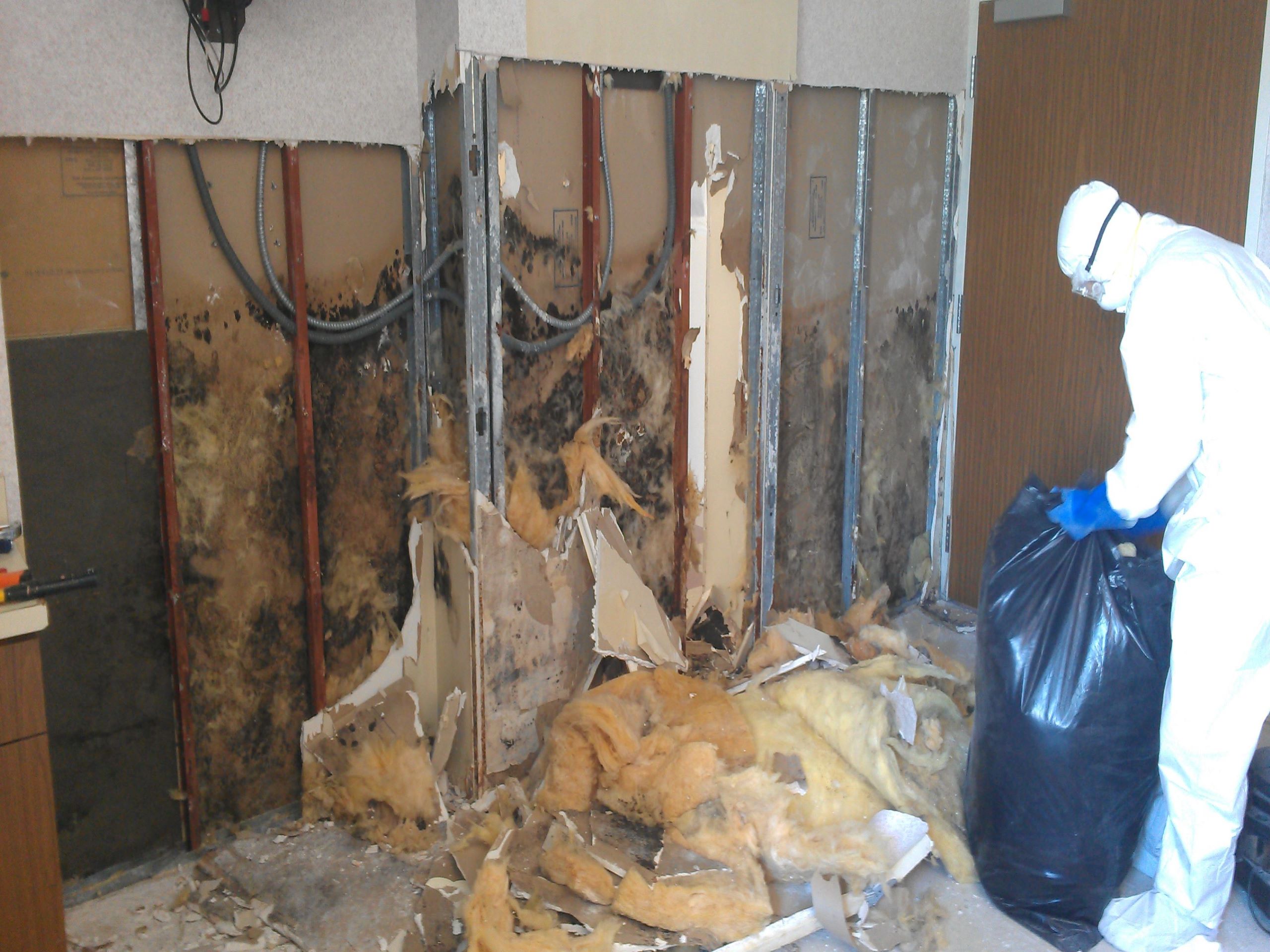Mold Remediation

What to do until help arrives
- Don’t attempt to clean or scrub the area yourself with bleach or other disinfectants.
- Turn off your HVAC system or fans in those areas to avoid spreading it to others areas of your home.
- Restrict access to the area with mold for pets, kids, and yourself. If the mold is contained in one room or area that has a door, close the door or cabinet to help with containment.
What Is the mold remediation process?
1. Source Identification
First, we identify the cause, location and spread of the mold. If necessary, this may require lab tests to help identify the extent of the damages.
2. Containment & Removal
Mold spreads quickly. We isolate the contaminated area(s) to stop the spread of mold spores to other areas. Then remove all unsalvageable materials and affected structures.
3. Air Filtration
We professionally clean the area following ANSI/IICRC S520 industry standards. The air needs to be cleaned as well. We use (HEPA) air filters to eliminate mold spores, dust, and other airborne debris from the space.
4. Estimating
Once all mold has been remediated, remove any equipment, and put together an estimate for insurance or the homeowner.
FAQ
Mold (and mildew) are common terms for fungi that can grow in damp locations in buildings, although molds are present everywhere, indoors and outdoors. Molds are important microorganisms because they help break down dead plant and animal material and recycle nutrients in the environment. There are many kinds of molds, and mold growth can have many forms and colors. To grow and reproduce, mold only needs food — any organic matter, such as leaves, wood, paper, or even dust — and moisture. Organic matter is almost always available, so whether mold grows depends mostly on whether there is moisture. By fixing moisture problems, you can keep mold from growing in your home.
Mold or moisture problems may be visible or hidden. Visible areas could include surfaces in the building itself and items in the building. Examples of hidden problem areas include beneath wallpaper, behind furniture, behind baseboards, or inside walls, floors, or ceilings. Signs of a mold or moisture problem in your home are:
- Water-stained, discolored, or moldy surfaces
- Water damage, such as warped floors, peeling or bubbled paint, or rotting wood
- Damp surfaces, including condensation on windows or walls
- An earthy, musty, or moldy smell
You might also have a mold problem if people who are sensitive or allergic to mold have symptoms when they are in your home.
There are several steps to fixing a mold or dampness problem.
- Find the damp or moldy areas
- Fix the source of the moisture problems
- Dry or replace wet materials
- Clean or remove moldy materials
Generally, materials are either porous or non-porous. Non-porous materials (such as glass, plastic, metal, or ceramics) do not absorb water and can be effectively cleaned of mold. Porous materials (such as drywall, ceiling tiles, drapes, or upholstered furniture) do absorb water and usually cannot be effectively cleaned of mold. If the porous materials look or smell moldy, they should be removed. In addition, porous materials that have stayed wet for more than a day or two may need to be removed, even if they do not yet look or smell moldy, because mold may have started to grow under some conditions.
Any type of mold that you see or smell in your building is a risk to your health and should be fixed. The more mold or moisture that you see or smell, the greater the risk to your health. There is currently no evidence that the particular kind of mold in your building matters.

